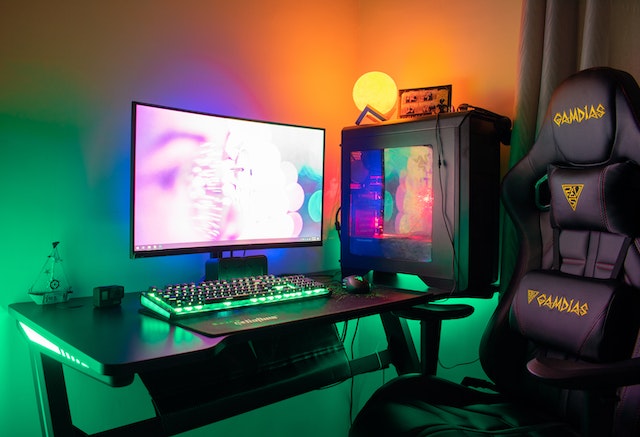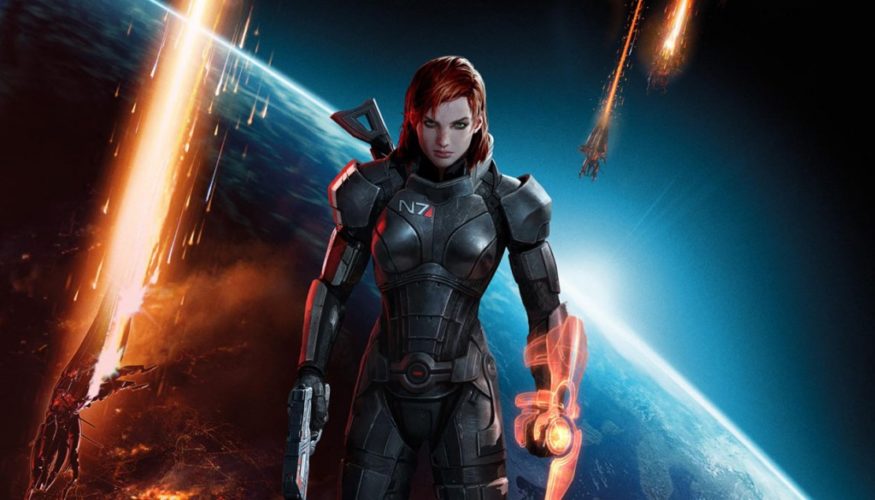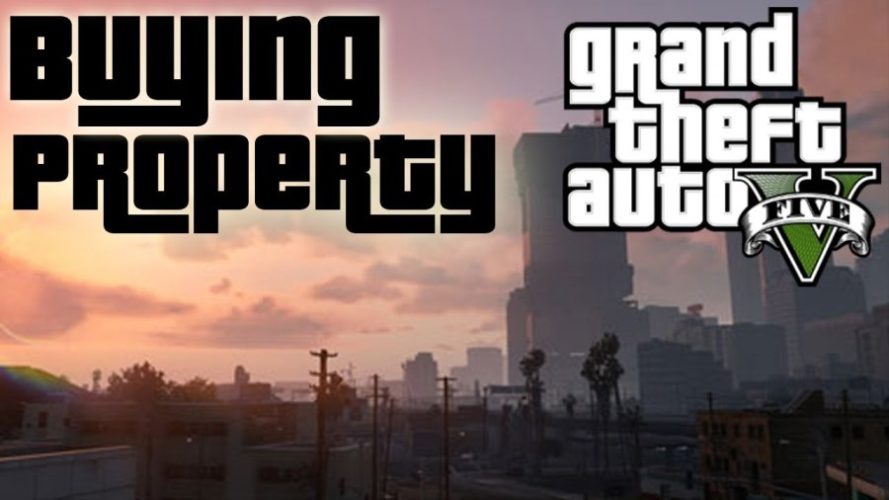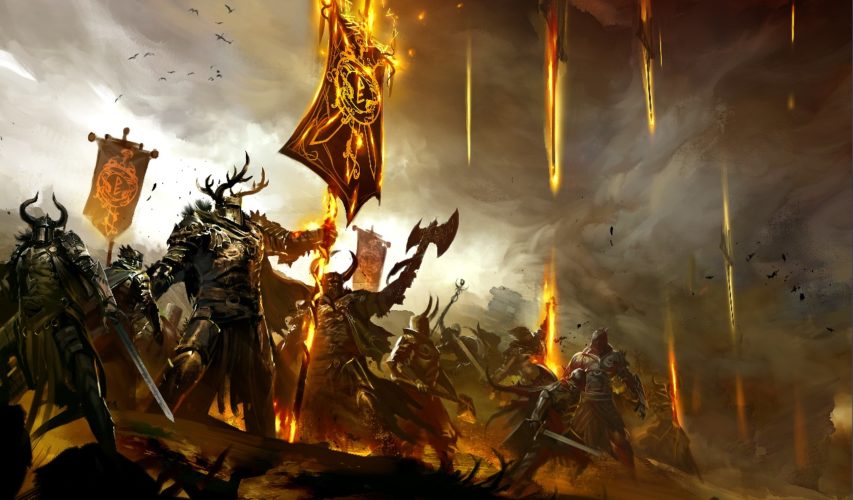Guides
Knock of the coffin lid: Mini-Guide

Knock on the Coffin Lid is a fresh roguelike. The game combines interesting and thoughtful dialogues with RPG elements. RedBoon Studios – independent indie developers have brought Knock on the Coffin Lid to life. K.O.T.C.L. can easily captivate you because of the random events and dialogues of the main characters. Interesting stories move from one character to the next. It will not leave anyone untouched.
Knock on the Coffin Lid has a very seriously thought-out fight system, and you have to calculate each of your combat. This mini-guide will help you with that.
It’s easy to predict that the game starts with a knock on the coffin lid.
Each of the characters is very different from the others. The differences can be seen in the gameplay as well as in the story. Each character will expose you to Knock on the Coffin Lid and its plot from a new angle.
Each of your characters has no belongings left when they die, and all experience is nullified. There is no such thing in other games of the roguelike genre. All that was left from the last attempt was a general reaction to the events.
Сharacter Percival has risen from the dead. You will get to know other K.O.T.C.L. heroes later on.
General Information
Percival has a set of initial skill cards, and after every battle and all other events, you will get additional ones. After the fight, you can choose one of three cards. The cards are dropped in random order. Boss fights increase the chance of elite cards falling out, so you’ll have to try harder. It’s not necessary to have a large set of cards. It’s better to collect rarer, more powerful, and more useful cards. It is happening because the deck is constantly repeating movements. We recommend constantly improving your cards. Remember, you have the entire deck in your hands at the beginning of combat. Each round you get the top 5 cards. Once the deck doesn’t have enough cards to fill your hand and everything you discard is shuffled and goes into the deck.
There are exceptions, burns denotes that a card will disappear from the deck after use, it is condition cards.
All cards, except those given by equipment, may be improved once. The improvement of a card is shown in green text color. If you see a card with green text after fight, you are given an additional improved unique card. Cards are improved at rest or as a result of certain events.
All cards and things have a color differentiation on the name, by which you can immediately see how rare this card is. The color differentiation is pretty standard. You should remember that normal cards are indicated by gray, rare cards by blue, and yellow indicates that the card is epic.
While ordinary cards have only one kind of enhancement, which can increase damage, block, or reduce energy costs, each character has its unique cards, which can be improved by one of three kinds. Such reinforcements have a strong influence on strategy and an adaptive parameter.
Percival has two unique cards: lunge 5 cards and reflection 3 cards. After fight you get only one card, equipment gives you several cards in your deck.
Now let’s talk about card categories
There are five card categories in the game: talent, attack and skill, condition, and a curse. Although at first glance they are similar – the difference is enormous.
Talents are the most powerful cards in the game, acting for the entire fight.
Attacks are basic abilities that deal damage.
Skills are the most diverse category, where everything falls. Blocks, defenses, magic, and putting positive and negative effects on characters. Some will give you extra cards, the ability to go over your deck, and even give your energy.
States are the negative cards that enemies add to a character’s deck under certain conditions or attacks.
Curses are the most unpleasant of the categories. This card can add adverse results after cursed items or events. It can happen if you carry the object with you but don’t wear it. You can get rid of them from a merchant, for separate money, or shrines.
Now that we’ve got the cards sorted out, let’s deal with the stats.
Health points are very significant. There is no health regeneration between battles. Defense plays a very important role in every fight. It can be healed on rest, after some events, and with the help of things and consumables.
Defense is a very complex parameter, which must be taken into account in every hit. It includes the skill of block and armor. Block is your defense for the round. Defense is also aided by your armor. This option is given by armor and some talents.
Your enemies will quite often have the skill obstacle. This means that the remaining defendants are not reset at the end of the round, but go to the next one, and continue to accumulate.
Rivals
In the first act, your choices will take you on different paths through the lands of the elves or dwarves. All of them will lead you to the main boss. In each fight, you are shown the next action of the enemies, so that you can prepare for it. Here rivals are drastically different. From the beginning, your choice should be centered on which enemies you will fight.
Map
The card makes it very easy to map out the route. You can see a marker and follow it. To build up your strength, you are better off choosing the longest roads, through merchants and resting places.
Equipment
Equipment is important element of battles. They give great bonuses, especially if you’ve lived long enough to collect a set. They are also quite a lot of different ones. The kits may also involve weapons.
At each rebirth, you will have a simple sword and shield. In addition to shields and weapons, there is Armor, Boots, Helmet, Costume Jewelry, and one slot for memorabilia obtained after battles with bosses.
The game also has expendable elixirs that deal damage or increase your strength, defense, and health. You can carry them around with you.
Knock on the Coffin Lid is sure to please you. It’s addictive with a fantasy world, an interesting story, and combat mechanics. The game is available on Steam for PC. Connect with us!
Guides
Cozy Gaming in 2025: What It Means and Why Players Crave It

There are many types of gamers. Some like playing first-person shooter games, while others like role-playing games where they must go on quests. Then, some players just want a chill game that requires minimal effort. This is where cozy gaming comes in.
From farming games like Stardew Valley and Luma Island to community development games like Animal Crossing and Ooblets, cozy games have gained popularity in recent years.
These games aren’t characterized by competitive play or flashy graphics; what sets them apart is their gentle pacing, soothing visuals, and low-stress game mechanics. Players enjoy these games because they bring emotional comfort and quiet joy.
The popularity of cozy games has influenced even online platforms that aren’t traditionally cozy. This is evident in online gaming sites like Quatro Casino Canada that has recently started introducing relaxing interfaces and visually soothing themes to bring players comfort and stress-free engagement.
In this article, gaming experts from CasinoOnlineCA will discuss the characteristics that define cozy gaming, the most popular types of cozy games, and why players are drawn to them.
Let’s begin.

What Defines a Cozy Game?
In a nutshell, a cozy game is globally defined by soothing vibes, simple gameplay, and the absence of violence or serious consequences. However, CasinoOnlineCA expert and author James Segrest wants to note that the definition of cozy gaming is widely varied and often personal.
For example, one player may find resource management games like Raft cozy, while another could feel just as relaxed when playing a card game with soft background music. What feels cozy to one person may not be the same to another; it’s more about the emotional experience than the specific mechanics.
That said, the gaming community has agreed that a game would generally need the following elements to be considered “cozy:”
Low-Stress Gameplay with Lower Stakes
Cozy games typically don’t include high-pressure scenarios. Players don’t have to worry about losing or failing permanently. For example, if you’re playing a cozy RPG game, you might die, but you won’t lose your inventory, thereby any serious repercussions from dying are removed.
This means players are more “free” to explore and engage without worry, making gameplay more therapeutic than competitive.
Simple Mechanics with Minimal Violence
Cozy games are characterized by simple controls and objectives that are easy to learn. Whether it’s farming, fishing, cooking, or decorating, gameplay is usually straightforward and doesn’t require intense skill or precision. You can still be productive without pressure, which 51% of gamers appreciate.
Moreover, cozy games usually don’t include conflict or violence; if there’s any, it’s kept to a minimal level. This aligns with the goal of cozy games to maintain a low-stress gameplay.
Comforting Atmosphere
More than anything else, cozy games are meant to make you feel good and comfortable. This is why 54% of gamers say these games help alleviate stress.
Whether it’s the warmth of a digital home, the rhythm of daily routine tasks, or the nostalgia brought by pixel art, cozy games bring comfort and familiarity.
Types of Cozy Games: Gentle Worlds, Different Paths
Cozy games come in different genres. Let’s examine the various types of cozy games that bring calm and comfort in their own unique ways.
Farming and Life Simulators
These games let you grow crops, care for animals, decorate your home, and build relationships with characters in a small town or village. They often follow daily routines and have simple goals that provide players with a sense of escape. With these games, players can often play at their own pace.
Popular Titles: Stardew Valley, Harvest Moon, Coral Island
Puzzle Games
Although these games require you to think hard, they’re not stressful because they often lack timers. You simply solve puzzles at your own pace, often in a quiet, calm setting.
Popular Titles: Unpacking, Dorfromantik, Moncage
Design and Decor Games
With these types of cozy games, you can design rooms and add furniture and flair to certain spaces. They focus on creativity, allowing players to express themselves however they want. There are no wrong choices, just possibilities.
Popular Titles: The Sims 4, Animal Crossing: New Horizons, Interior Story
Exploration Games
These games focus on movement and setting a calming mood. Often, a story unfolds as you explore the world in a game. For example, players can explore natural landscapes, such as forests and lakeside towns. Paired with high-quality graphics, these games are perfect for players who simply want to witness awe-inspiring views and exist in a beautiful world — even if it’s just virtually.
Popular Titles: A Short Hike, Lake, Spiritfarer
Creature Collectors and Pet Sims
Perfect for animal lovers, the central theme of these games is companionship. You can befriend woodland creatures, collect mythical beings, or take care of cute digital pets. This is great for players who enjoy nurturing creatures and pets in a light-hearted setting.
Popular Titles: Neko Atsume, Ooblets, Pokémon: Let’s Go
Cooking and Crafting Games
These cozy games are calming while allowing players to express their creativity. You can gather resources, craft items, and build. With cooking games, players typically need to collect the ingredients and unlock new recipes.
Whether preparing an intricate dish or creating a new potion, the process is usually hands-on and satisfying, appealing to players who enjoy methodical, task-based games.
Popular Titles: No Place Like Home, Cooking Mama, Potion Craft
Cozy Casino and Card Games
Some card and casino games are now designed to be slow-paced and easy to play. They use soft colours and sounds to keep things calm — perfect for players who don’t want the pressure and intensity of traditional gambling environments.
Popular Titles: Slotomania, Solitaire Stories, Regency Solitaire

Why Players Are Craving Calm, Cozy Games
Cozy games provide a glimpse into the future of gaming, where emotional connection and comfort are prioritized. If recent surveys have taught us anything, it’s that more players are now turning to gaming to relax and escape from the stress of daily life.
Modern society is fast-paced, with tight schedules, unending alerts and notifications, digital distractions, and global uncertainty. This is why relaxation has become a growing priority, and cozy games are on the rise.
For many people, cozy games provide a quiet corner where they can slow down, feel more in control, and take a break without pressure. Unlike traditional competitive (and often complicated) titles, these games focus on simple pleasure — tending a garden, solving light puzzles, or decorating a home.
Cozy Games and Their Contribution to Mental Health
Albeit its subtlety, cozy games support mental wellness in meaningful ways. They:
- Provide structure without stress
- Challenge players without frustration
- Outline goals without urgency
This type of gameplay helps players feel more grounded, especially when the real world feels chaotic. Even short sessions can provide a sense of comfort or achievement. As a result, players of all ages choose games that make them feel good.
Final Word
The popularity of cozy games is attributed to people’s growing need to relax and feel good when they play. These low-stress games often focus on simple tasks like farming, cooking, exploring, and solving puzzles.
Even online casino platforms are following the trend, adding cozier games to cater to their players’ needs. As life gets busier and more stressful, it’s understandable that the future of gaming is moving toward comfort and creating peaceful moments through play.
Guides
Valorant Agent Release Order: A Complete Timeline

Key Takeaways
- Valorant launched in June 2020 with 11 agents and has steadily added more with each episode.
- Agents are divided into four roles: Duelist, Controller, Initiator, and Sentinel.
- Each new agent influences the game’s meta, often changing team compositions and strategies.
- Characters like Killjoy, Chamber, and Gekko introduced new ways to control space and gather intel.
- Valorant’s lore includes Radiants, mirror Earth threats, and secret tech developments across the globe.
Introduction
Valorant has evolved since it first launched, and with every new agent that comes into play, the game just keeps getting better and better. Let’s find out when your favorite agent made their debut? We’ve put together a list of all Valorant agents in the order they were released, with their dates and roles.
What Is An Agent In Valorant?
In Valorant, the agent you pick is more than just a character with a cool skin and a weapon; they’re your key to victory in every match. Each agent has their own set of unique abilities that are used to smoke out enemies, reveal hidden dangers, heal teammates, or create total mayhem.
They’re categorized into four distinct roles: Duelists (the aggressive entry fraggers), Initiators (the intel gatherers), Sentinels (the defensive experts), and Controllers (the map manipulators). No two agents play alike, which keeps the game feeling fresh and exciting every time you jump in.
Riot Games is always adding new agents to the mix, each one crafted to change up the gameplay. So, choosing your agent isn’t just a routine before the match, it’s a crucial decision that influences the outcome of any round.
Valorant Agent Release Order: Full Chronological List

Since its debut in June 2020, Valorant has been on a constant journey of evolution. Each new character brings unique abilities, fresh team dynamics, and strategic changes that keep the gameplay thrilling.
Also Read: Call of Duty: Black Ops 6 – Campaign Review
Launch Roster (June 2, 2020)
- Brimstone – Controller
- Viper – Controller
- Omen – Controller
- Phoenix – Duelist
- Jett – Duelist
- Reyna – Duelist (technically the first post-beta agent, but added at launch)
- Sage – Sentinel
- Sova – Initiator
- Cypher – Sentinel
- Breach – Initiator
- Raze – Duelist
Episode 1: Ignition
- Act 2 (August 4, 2020) – Killjoy (Sentinel)
- Germany’s turret-wielding genius added fresh defensive tactics with her gadgets.
Episode 2: Formation
- Act 1 (January 12, 2021) – Yoru (Duelist)
- Valorant’s first stealthy agent introduced teleportation and deception to the game.
Episode 3: Reflection
- Act 1 (June 22, 2021) – KAY/O (Initiator)
- This is a robotic agent designed to suppress enemy abilities and disrupt aggressive plays.
Episode 3: Reflection
- Act 3 (November 2, 2021) – Chamber (Sentinel)
- The stylish French marksman was introduced to bring a deadly mix of precision and teleportation.
Episode 4: Disruption
- Act 1 (January 11, 2022) – Neon (Duelist)
- This is a high-speed agent from the Philippines who electrified the pace of entry plays.
Episode 4: Disruption
- Act 3 (April 27, 2022) – Fade (Initiator)
- A Turkish agent with nightmare-themed intel-gathering abilities.
Episode 5: Dimension
- Act 1 (June 22, 2022) – Harbor (Controller)
- Coming from India, Harbor brought water-based smoke and crowd control abilities to the game.
Episode 6: Revelation
- Act 1 (January 10, 2023) – Gekko (Initiator)
- From Los Angeles, Gekko introduced an adorable creature-based utility to support his team.
Episode 7: Evolution
- Act 1 (June 27, 2023) – Deadlock (Sentinel)
- A Norwegian agent who brought high-tech crowd-control abilities to slow down fast entries.
Episode 8: Defiance
- Act 1 (January 9, 2024) – Iso (Duelist)
- A Chinese agent focused on isolating 1v1 duels and bulletproof barriers.
Episode 9: Revelation
- Act 1 (June 25, 2024) – Clove (Controller)
- Clove introduced a unique death-based revive mechanic, shaking up post-death impact.
Also Read: Goodbye Volcano High Review
What Are Some Notable Shifts In Meta Due To New Agents?

Valorant’s meta has gone through some pretty wild changes over time, largely thanks to new agents shaking up the usual strategies. Every time Riot introduces a new character, it feels like someone hit the reset button on team compositions and playstyles.
- When Killjoy came onto the scene, defensive setups got a serious boost. Her turret and lockdown ability made it a lot tougher for teams to rush sites without a second thought. She really empowered Sentinels, especially in solo queue where map control is crucial.
- Yoru started off a bit lackluster, but after his rework, he brought a whole new level of mind games to the table. With his tricky teleports, fake-outs, and unpredictable flanks, defending became a lot less straightforward and required much better communication.
- Chamber came with his teleportation skills and unique guns, he took the place of traditional Sentinels and even some Duelists in various pro team compositions. Players loved his quick escapes and one-shot capabilities, where he was a force to be reckoned with in both ranked matches and esports until Riot decided to tone him down a bit.
- Then we saw Fade stepping in to take over the recon role from Sova in a lot of lineups. Her abilities made it easy to spot enemies without needing that perfect aim. Teams appreciated her Haunt and Prowlers, especially in tight spots and during post-plant situations.
- And just when you thought it couldn’t get any more interesting, Gekko arrived, shifting the meta towards agents who could juggle multiple tasks. His creatures could plant, flash, and gather intel all at the same time, making him a key player on both offense and defense.
What Is The Lore Timeline Of Valorant Agents?
Valorant’s lore unfolds in a near-future Earth, following a pivotal event known as First Light, which unleashed mysterious energy surges around the globe. This phenomenon led to the emergence of Radiants, people who gained extraordinary abilities. To harness and comprehend this newfound power, the Valorant Protocol was established, a worldwide task force comprising both Radiants and non-Radiants.
The narrative kicks off with early agents like Brimstone, Viper, and Phoenix, who represent the first wave of operatives. As new agents come on board, the lore deepens with each Episode, often teasing connections, rivalries, or personal quests. For instance, Yoru delves into ancient Radiant sites in Japan, while Fade reveals secrets through her fear manipulation. Meanwhile, Chamber and Deadlock are engaged in more clandestine and experimental tech initiatives.
As the story progresses, a significant twist emerges, there’s a mirror Earth inhabited by enemy agents from an alternate dimension. This adds an intriguing layer to the gameplay, explaining why players frequently encounter the same agents on rival teams. The stakes rise as more agents are enlisted to defend Earth against these mirrored threats.
Also Read: The Hundred Line: Last Defense Academy Review
What Has Been The Community Reactions And Fan Favorites?

The Valorant community is always ready to voice their thoughts when new agents make their debut. Take Reyna and Jett, for instance, these two quickly became fan favorites thanks to their flashy and aggressive playstyles. Then there’s Chamber, who also collected a huge following; players were drawn to his precision and laid-back personality, even if his dominance led to some balance concerns.
When Neon came onto the scene, fans were thrilled to see Filipino representation, and her fast-paced gameplay added a fresh twist to the game. Gekko, on the other hand, won hearts with his wholesome vibe and inventive utility, particularly his cute little creature sidekicks.
However, not every agent has hit the mark. Agents like Yoru at launch and Deadlock received a more mixed response, with players feeling they were either underwhelming or just didn’t make a significant impact.
Conclusion
Valorant’s ever-expanding roster of agents keeps the game exciting, competitive, and bursting with personality. It has iconic characters that people loved at launch to the game-changing newcomers.
Guides
Guild Wars 2 Weaponsmith Leveling Guide 0-400

Key Points:
- Weaponsmithing lets you craft melee weapons for all classes, helping you gear up or earn gold efficiently.
- Leveling from 0 to 400 involves crafting and discovery, using materials like wood, ore, inscriptions, and sigils.
- Smart planning, material gathering, and diverse crafting recipes make the journey to master Weaponsmith smooth and cost-effective.
Introduction
Weaponsmithing is one of the primary crafting professions in Guild Wars 2. It allows you to craft melee weapons used by many classes, which is perfect if you want to gear up your characters or make gold by selling gear to other players. Here, we’ll walk you through leveling the skill from 0 to 400, step-by-step, while keeping it fast, simple, and beginner-friendly.
What Is Weaponsmithing in GW2?

Weaponsmithing is a crafting discipline that lets you create melee weapons. These weapons are used by almost every profession in the game. With Weaponsmithing, you can make:
- Axes
- Daggers
- Greatswords
- Hammers
- Maces
- Shields
- Spears
- Swords
To unlock the profession, you’ll need to visit a Weaponsmithing Trainer (found in major cities like Lion’s Arch, Divinity’s Reach, Hoelbrak, etc.). You can have two crafting disciplines active simultaneously, but switch between them later for a small fee.
Weaponsmithing is excellent for making powerful gear, leveling alts, or selling weapons on the Trading Post.
Also Read: Can You Play Elden Ring Offline? | Everything a Tarnished Needs to Know
Before You Start: Things You’ll Need
Crafting takes time and resources, so it’s smart to prepare a few things before starting:
- A character (Level 80 is ideal, but not required)
- A few gold coins (you’ll need to buy ingredients)
- Access to a bank and the Trading Post
- Salvage kits to break down unwanted gear
- Lots of bag space (crafting fills up your inventory fast)
You can gather materials while playing or buy them directly for faster leveling. Either way, planning ahead is good so you don’t get stuck.

Total Materials Needed (0–400)
Here’s a list of materials you’ll need from the start to level 400. Most of them can be gathered or bought from the Trading Post.
From Weaponsmith Vendor:
- 171 Lump of Coal
- 90 Lump of Primordium
From Trading Post / Gathering:
- 144 Green Wood Logs
- 72 Soft Wood Logs
- 54 Seasoned Wood Logs
- 162 Hard Wood Logs
- 240 Elder Wood Logs
- 796 Iron Ore
- 180 Platinum Ore
- 256 Mithril Ore
- 72 Claws
- 18 Pile of Shimmering Dust
- 72 Small Venom Sacs
- 2 Crystal Shards
- 8 Molten Cores
- 16 Molten Shards
- 13 Onyx Fragments
Special Components:
- 24 Bronze Axe Blade
- 27 Bronze Spear Head
- 27 Large Green Haft
- 13 Carrion Mithril Plated Inscription
- 27 Berserker’s Hard Inscription
- 13 Malign Bronze Plated Inscription
- 11 Malign Green Inscription
- 27 Rampager’s Elder Inscription
- 27 Rejuvenating Seasoned Inscription
- 27 Resilient Green Inscription
These numbers are optimized to help you level fast while using as few materials as possible.
Also Read: Is The Forest Cross-Platform?
How Leveling Works
Weaponsmithing XP comes mostly from Crafting and Discovery. Discovery gives more XP, especially when creating something for the first time. To use Discovery, combine base components (like sword blades, hilts, and inscriptions) in the discovery tab at a crafting station.
Level 0–75: Start With Bronze
Materials:
- Bronze Ingots (made from Copper + Tin)
- Green Wood Planks
- Small Green Hafts
- Malign Inscriptions
What to Craft:
- Make 48 Green Wood Planks
- Craft 24 Small Green Hafts
- In Discovery, combine:
- Bronze Axe Blade + Small Green Haft + Malign Green Inscription = Malign Bronze Axe
- Make 10 Malign Bronze Axes
- Discover Resilient Bronze Spear
- Craft 26 Resilient Bronze Spears
- Discover (Master) Malign Bronze Axe (uses Plated Inscription)
- Make 12 of those
You’ll reach level 75 quickly by mixing different weapon types and using discovery.
Level 75–150: Move to Iron
Materials:
- 94 Iron Ingots
- 18 Soft Wood Planks
- Iron Shield Parts (Boss and Backing)
- Inscription materials
- Onyx Fragments + Dust
What to Craft:
- Make 9 Iron Shield Backings and 9 Iron Shield Bosses
- Discover and craft Simple Sharpening Stones
- Discover and make a Minor Sigil of Strength
- Make 9 Iron Plated Dowels
- Craft 9 Ravaging Iron Inscriptions
- Discover and craft (Master) Ravaging Iron Shield
- Make 8 of those
You’ll now be halfway through T2 crafting.
Also Read: Is PUBG Cross Platform? [PC, Xbox One, PS4, And Mobiles]
Level 150–225: Steel Weapons
Materials:
- 171 Steel Ingots (Iron + Coal)
- 18 Seasoned Wood Planks
- Steel Shield Parts
- Pillaging and Rejuvenating Inscriptions
What to Craft:
- Make 36 Steel Shield Bosses and 36 Backings
- Discover and make Rejuvenating Steel Shield (26 total)
- Make 9 Steel Plated Dowels
- Create 9 Pillaging Inscriptions
- Discover and craft (Master) Hunter’s Steel Shield (8 total)
You’ll reach 225 and be ready for high-level materials.
Level 225–300: Craft With Darksteel

Materials:
- 90 Darksteel Ingots (requires Iron + Mithril + Primordium)
- 54 Hardwood Planks
- 27 Spear Heads
- Large Hafts
- Crystal Shards and Molten Shards
What to Craft:
- Make 27 Darksteel Spear Heads and 27 Large Hard Hafts
- Discover the Major Sigil of Sanctuary
- Discover and craft Berserker’s Darksteel Spear (26 total)
- Discover and craft Major Sigil of Doom (7 total)
After this, you’ll reach level 300.
Level 300–400: Final Stretch With Mithril
Materials:
- 128 Mithril Ingots
- 80 Elder Wood Planks
- 40 Large Elder Hafts
- 13 Mithril Hammer Heads
- 27 Mithril Spear Heads
- Rampager’s, Carrion Inscriptions
- Molten Core
What to Craft:
- Craft 27 Mithril Spear Heads + 40 Large Elder Hafts
- Discover and craft Rampager’s Mithril Spear (26 total)
- Discover and craft the Carrion Mithril Hammer (12 total)
- Make 7 Major Sigils of Doom (Mithril + Molten Core)
Congratulations! You’re now a level 400 Weaponsmith!
What’s Next After 400?
After hitting level 400, you unlock the ability to:
- Craft exotic weapons
- Level up to 500 for ascended gear
- Do daily crafting for profit
- Make legendary components
You can also craft high-level gear for your other characters or sell them for gold.
Final Tips
- Use Discovery Often – It gives more XP than plain crafting.
- Salvage Gear You Don’t Need – This contains inscriptions, dust, and sigil parts.
- Don’t Overcraft One Item – Variety saves materials and gives better XP.
- Watch the Trading Post – Prices fluctuate, buy mats when they’re cheap.
- Craft Boosters – Use them during festivals or XP events for extra gains.
Also Read: Is DayZ Crossplay? Everything You Need to Know
Conclusion
This GW2 weaponsmith guide gives you everything you need to level from 0 to 400 quickly and with fewer wasted materials. You’ve learned what Weaponsmithing is, what materials are required, and how to optimize your journey through each crafting tier.
Whether you’re here to make gear, earn gold, or complete your crafting journal, you’re now well-equipped to start your adventure as a master Weaponsmith in Tyria.
Good luck—and happy forging!
-

 Guides5 years ago
Guides5 years ago6 Proven Ways to Get more Instagram Likes on your Business Account
-

 Mainstream11 years ago
Mainstream11 years agoBioWare: Mass Effect 4 to Benefit From Dropping Last-Gen, Will Not Share Template With Dragon Age: Inquisition
-

 Mainstream7 years ago
Mainstream7 years agoHow to Buy Property & Safe Houses in GTA 5 (Grand Theft Auto 5)
-

 Guides12 months ago
Guides12 months agoFree Fire vs PUBG: Comparing Graphics, Gameplay, and More
-

 Casual2 years ago
Casual2 years ago8 Ways to Fix Over-Extrusion and Under-Extrusion in 3D Printing
-

 Mainstream12 years ago
Mainstream12 years agoGuild Wars 2: The eSports Dream and the sPvP Tragedy
-

 Gaming News2 years ago
Gaming News2 years agoSwiping, Tapping, and Tilting: How Mobile Games Are Played Today
-

 iOS Games2 years ago
iOS Games2 years agoThe Best Basketball Games for IOS
